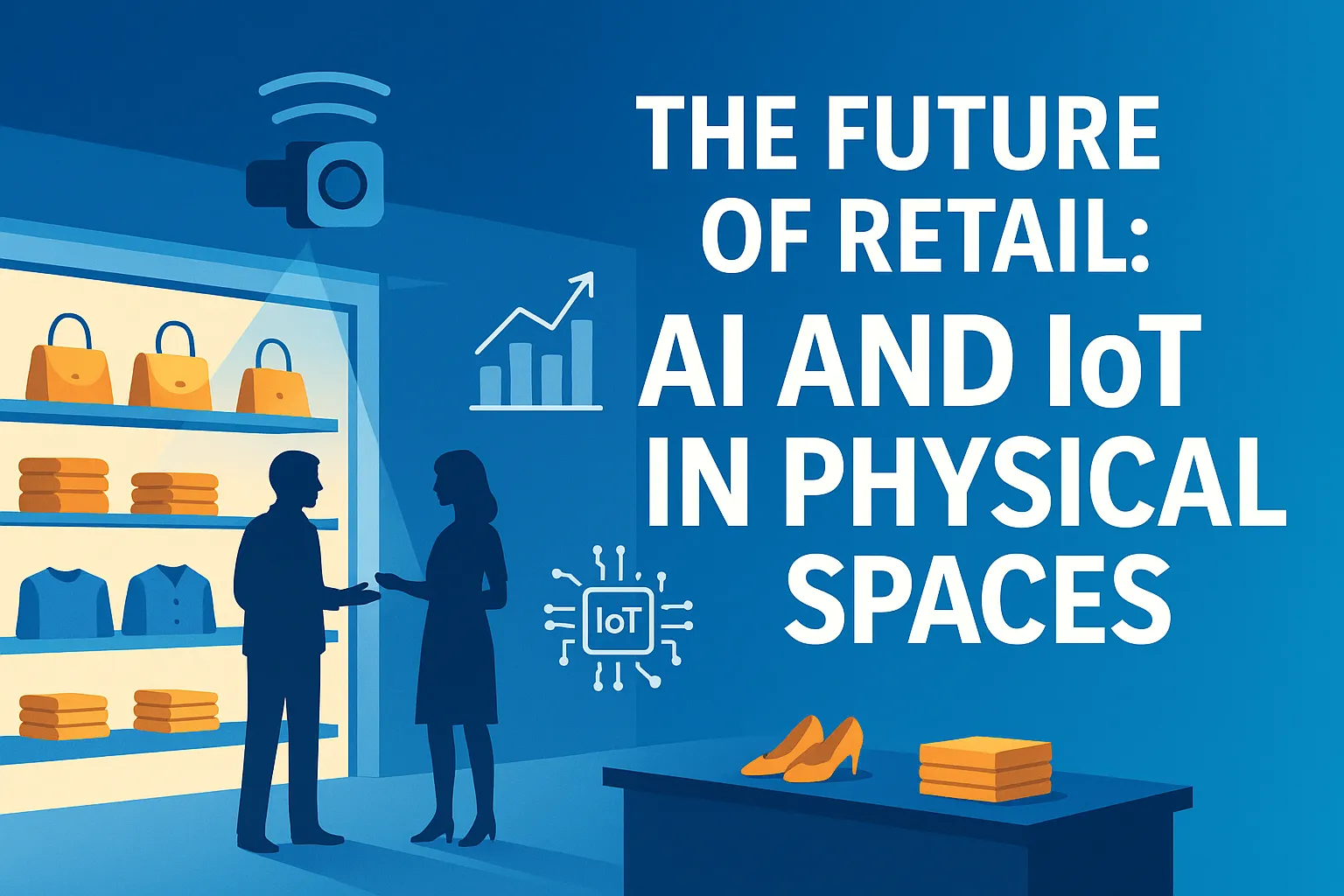Retail isn’t just going digital—it’s getting smarter. While e-commerce has reshaped how we shop, offline retail is far from obsolete. In fact, it’s undergoing a quiet revolution powered by artificial intelligence (AI) and the Internet of Things (IoT). Together, they’re bringing data-driven decision-making into the physical world—and changing the game for retailers who want to stay ahead.
In this article, we’ll break down how AI and IoT are transforming physical retail spaces, making them more efficient, responsive, and in tune with customer needs than ever before.
What Happens When Stores Think Like Smart Systems?
Let’s start with the basics. IoT devices are physical sensors and gadgets connected to the internet. In retail, that means counters, cameras, and even smart shelves can now collect real-time data. AI takes that data and makes sense of it—analyzing patterns, predicting outcomes, and even automating decisions.
The result? Physical retail spaces that can see, think, and react.
Key Benefits of AI and IoT in Retail Environments
1. Real-Time Customer Tracking
IoT sensors and cameras can monitor foot traffic, movement paths, and even body language. This allows store managers to track how customers interact with displays or navigate through aisles—without relying on guesswork.
2. Smarter Inventory Management
With smart shelves and connected devices, inventory is monitored in real time. AI can predict demand, prevent overstock or out-of-stock situations, and even trigger automatic restocking.
3. Optimized Store Layouts
By analyzing dwell times, heatmaps, and flow patterns, AI can identify which zones attract the most attention and which are being ignored. This data helps businesses reshape layouts for maximum engagement.
4. Efficient Operations
AI-powered systems can forecast staffing needs, optimize energy consumption, and detect issues before they impact operations. IoT devices track everything from lighting to temperature—reducing waste and improving sustainability.
Use Case Table: How AI + IoT Improve Retail
| Application Area | Technology Used | Benefit |
|---|---|---|
| Foot Traffic Analysis | Smart cameras, motion sensors | Understand customer flow and behavior |
| Inventory Optimization | Smart shelves, RFID tags | Reduce stockouts and overstocks |
| Queue Management | People counters, AI algorithms | Minimize wait times at checkout |
| Space Utilization | Heatmaps, dwell time tracking | Maximize engagement zones |
| Energy Management | IoT-enabled HVAC & lighting | Cut down on energy costs |
Why This Matters for Physical Retail Spaces
Online retail has always had an edge in data. Now, physical locations are catching up. With AI and IoT, brick-and-mortar stores gain access to the same level of behavioral insights—only now it’s applied to real-world environments.
From flagship stores to malls and office spaces, the technology is adaptable. Whether you’re managing one location or fifty, AI and IoT can scale to match your operational complexity. And with modular devices like those offered by Openretail, setup doesn’t require deep IT involvement—just plug and play.
Building the Smart Store of Tomorrow—Today
Think of the modern retail space as a living system. It learns, adapts, and evolves. With AI analyzing thousands of micro-interactions and IoT feeding constant updates, retailers can respond faster and more accurately to customer behavior.
Want to rearrange a layout based on peak traffic times? Done. Curious why one display performs better than another? The data is there. Need to reduce costs while maintaining customer satisfaction? There’s an algorithm for that too.

